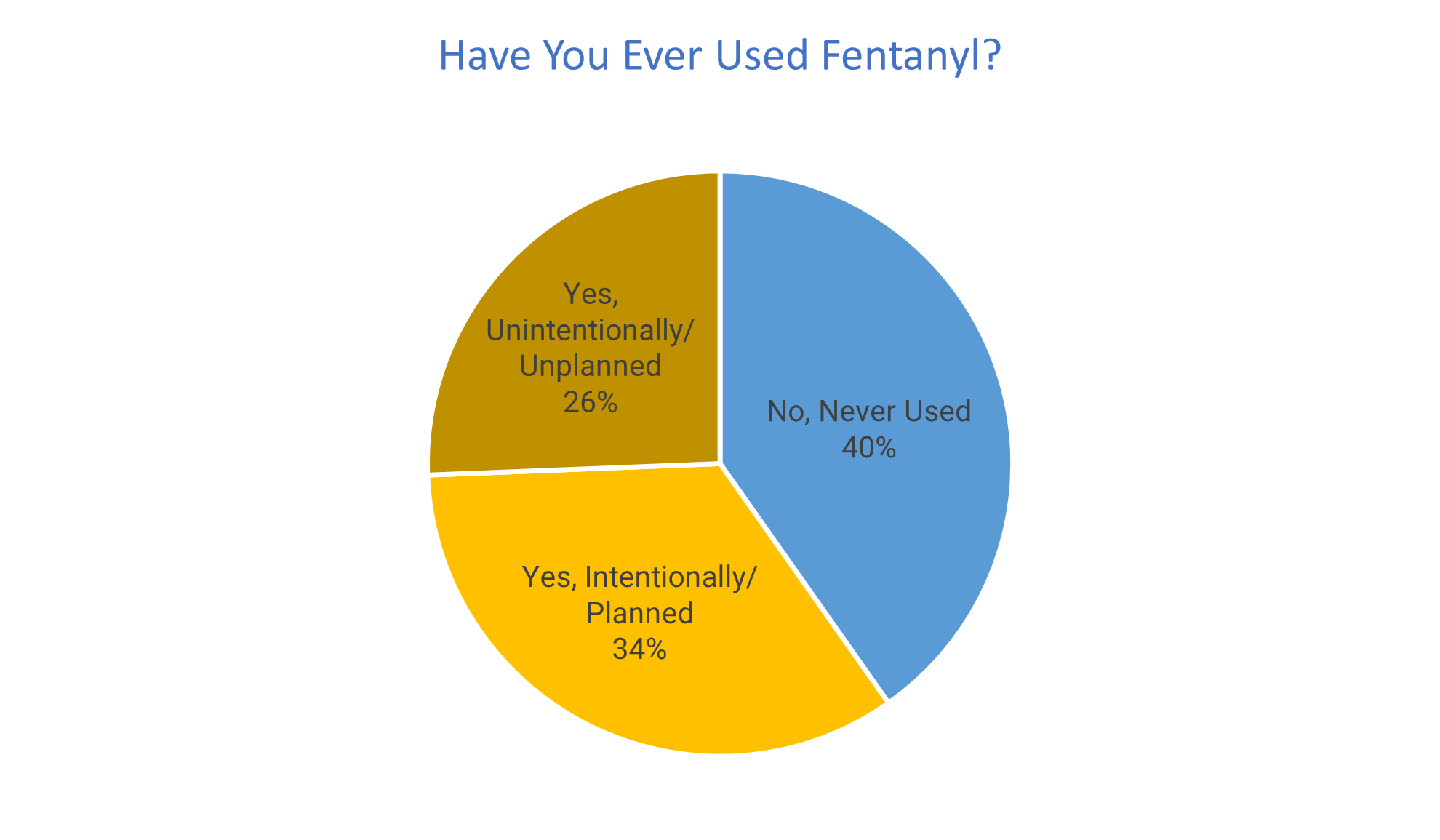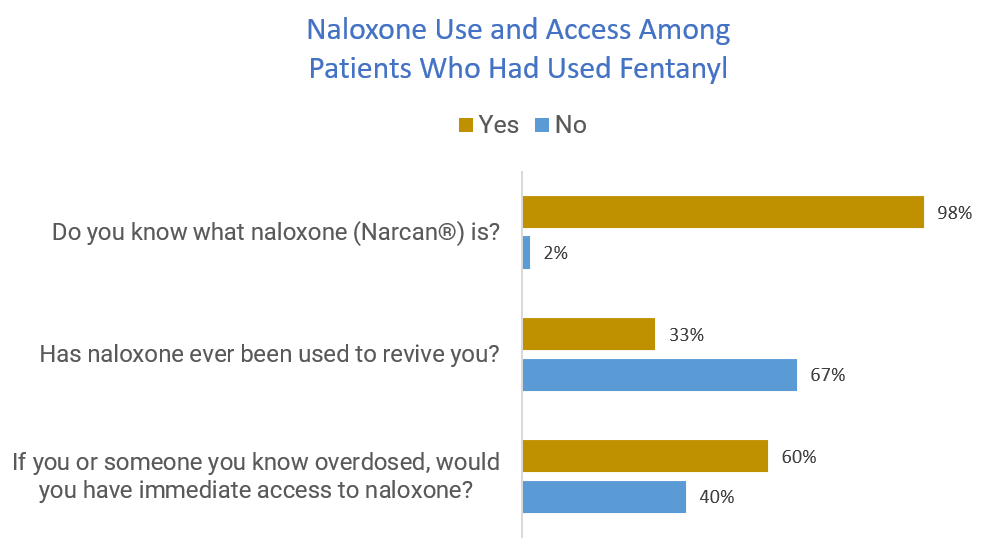FENTANYL USE AMONG CALIFORNIA HUB AND SPOKE PATIENTS
Authors: Diane Hilderbrand and Kendall Darfler
What is Fentanyl?
Fentanyl is a synthetic (manufactured) opioid used as a prescription drug for pain. It can also be made and used on the street, and is commonly mixed with other drugs like heroin, cocaine, and methamphetamine, with or without the knowledge of the person using it. Fentanyl is dangerous because of how deadly it is compared to other opioids, like heroin. As little as 2 mg of fentanyl can be fatal to the person using it.

Although fentanyl-related overdose death rates have been lower in the western United States than in the northeastern region of the country, rates have risen rapidly over the past several years in California. Fentanyl is now among the most common drugs involved in overdose deaths in California. As of the second quarter of 2020, the fentanyl-related overdose death rate was 8.92 deaths per 100,000 California residents.
Hub and Spoke Patients’ Experiences with Fentanyl
To better understand patient experiences with fentanyl use, our evaluation team at UCLA interviewed 166 patients receiving treatment in the California Hub and Spoke System. The interviews took place over two years, from August 2018 to July 2020. Participants came from Hub and Spoke locations throughout the state, and were interviewed over the phone, once when they started treatment and again, three months later.

60% of the patients we interviewed reported that they had ever used fentanyl. Among those who had used it, over half (57%) planned to use it or used heroin knowing it was laced with fentanyl. Eight participants described using fentanyl patches by, for example, cutting them up and smoking or injecting the contents. Many of the remaining 43% of those who had used fentanyl unintentionally described not being aware that their opioids or other drugs (e.g., cocaine, oxycodone) were laced. Two of these participants experienced non-fatal overdoses as a result of being unaware.
Fentanyl and Overdoses
On average, participants who reported fentanyl use had overdosed twice in the past, and they were more than four times more likely to have overdosed than those who never used fentanyl.
One participant described their experience of an overdose reversal with naloxone after using heroin that they were unaware was laced with fentanyl:
I went under. I went out. Luckily the [naloxone] was there. It saved me.

Almost all participants who had used fentanyl (98%) knew what naloxone was, and one-third had been revived with naloxone. However, 40% said they would not have immediate access to it if they or someone they knew overdosed.
Policy Implications
Given the increasing impact of fentanyl in California, it is imperative that policy strategies continue to prioritize harm reduction, like expanding access to naloxone and fentanyl testing strips. The California Naloxone Distribution program, a project of the state’s larger efforts to address opioid overdose, has distributed over 600,000 units of naloxone. However, our interviews with patients show that there may be additional barriers preventing people who use drugs from carrying naloxone with them in the event of an overdose. Further research should explore what these barriers are.
Fentanyl test strips should also be made available to alert those who are using opioids or other drugs to the presence of fentanyl. In April 2021, SAMHSA announced that the purchase and distribution of fentanyl test strips is allowable under State Opioid Response (SOR) funding mechanisms.
Additional harm reduction strategies for people who prefer fentanyl, such as encouraging them not to use alone, and to use less and more slowly should also be explored. Overdose prevention programs (OPPs; also known as “safe injection sites”), such as those cleared by California State Assembly Bill 362 (2019-2020), may serve as an especially effective location to implement such strategies. OPPs can also help to engage people in substance use treatment.
For more information, please read our full report here.
To find naloxone, visit the NEXT Distro website.